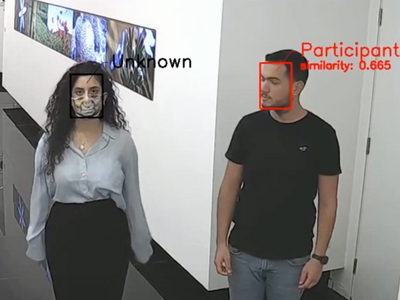Man
Professional
- Messages
- 3,223
- Reaction score
- 1,150
- Points
- 113

A specific pattern is applied to fabric or paper. The pattern prevents technologies from recognizing a person wearing a mask. The pattern copes with video systems around the world, but researchers say that cameras can be "trained".
The COVID-19 pandemic has made wearing masks a common practice, which initially greatly slowed down the work of facial recognition systems around the world. Over time, technologies have adapted - now an ordinary medical or any designer mask does not interfere with identifying a person.
Scientists from Ben-Gurion and Tel Aviv decided to test the hypothesis: is it possible to create a mask that does not lend itself to facial recognition systems.
The researchers experimented with different patterns and gradients. As a result, they got a pattern that baffles any FRT (Facial recognition technology). The mask resembles the structure of the skull in outline - the mouth, nose, cheekbones and even part of the eyes are visible on the fabric. All this is painted in a complex gradient of "rainbow" colors.
"We tested the effectiveness of our mask in the field," the researchers say. "The system was able to identify only 3% of the participants. Gender does not matter."
A camera recognizes a person in a regular mask in 80% of cases. Scientists say that the invented template is not the only possible one. If desired, a model can be developed for each technology that the world's facial recognition systems use today.
Researchers believe that this threat can also be dealt with. For example, configure the systems so that they regard any mask worn on the face as a simple medical one. This will help the technology not to "get confused."
Another "working" option is to teach cameras to restore the lower part of the face, focusing only on the upper one.
"There is a popular direction - generative adversarial network (GAN), - says graduate student Alon Zolfi, who led the study of "hostile" masks. - It uses known "input data" and refines the portrait. True, this is a "heavy" approach: it requires a completely different architecture of technical solutions and training. The person behind the camera also plays a big role in this process."
In the report (PDF), the experts shared a link to a video demonstrating the effectiveness of their development. We provide the video below:
Source
